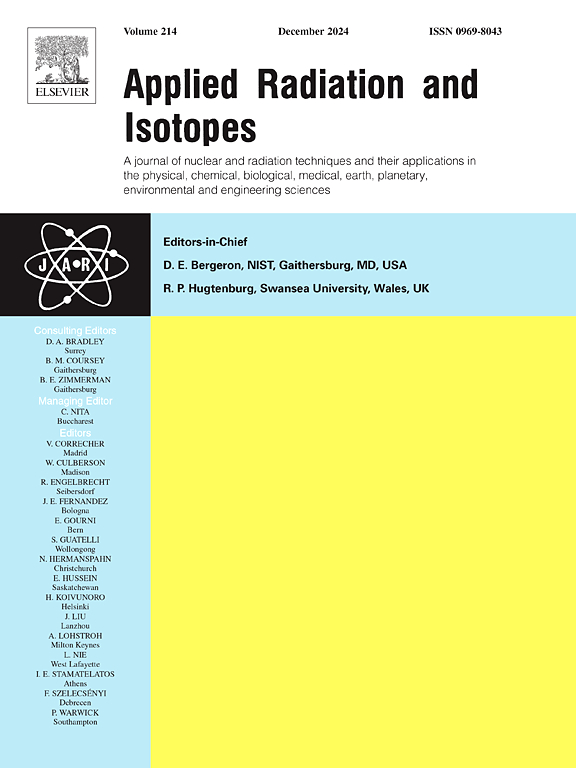Calculation of double differential neutron cross-sections for the 115In(α,xn) reaction
IF 1.6
3区 工程技术
Q3 CHEMISTRY, INORGANIC & NUCLEAR
引用次数: 0
Abstract
The angle-dependent double differential cross-sections of neutrons scattered from an Indium-115 target bombarded by alpha particles at energies of 26.8 and 45.2 MeV, is analyzed using the TALYS 1.95 and PHITS 3.22 computer codes. Theoretical calculations through the TALYS code incorporated assessments of direct, compound, and pre-equilibrium nuclear reaction mechanisms. The computed results were compared with the experimental data sourced from the literature, providing a robust validation of the findings. The Monte Carlo results showed favorable correspondence with the experimental findings for 45.2 MeV alpha energy at 120° and 150°. The compound reaction mechanism was found to be the dominant interaction at energies below the neutron separation energy. With the increase in neutron emission energy, notable contributions from the pre-equilibrium mechanism to the cross-section calculations were observed.
计算 115In(α,xn)反应的双差分中子截面
本文章由计算机程序翻译,如有差异,请以英文原文为准。
求助全文
约1分钟内获得全文
求助全文
来源期刊

Applied Radiation and Isotopes
工程技术-核科学技术
CiteScore
3.00
自引率
12.50%
发文量
406
审稿时长
13.5 months
期刊介绍:
Applied Radiation and Isotopes provides a high quality medium for the publication of substantial, original and scientific and technological papers on the development and peaceful application of nuclear, radiation and radionuclide techniques in chemistry, physics, biochemistry, biology, medicine, security, engineering and in the earth, planetary and environmental sciences, all including dosimetry. Nuclear techniques are defined in the broadest sense and both experimental and theoretical papers are welcome. They include the development and use of α- and β-particles, X-rays and γ-rays, neutrons and other nuclear particles and radiations from all sources, including radionuclides, synchrotron sources, cyclotrons and reactors and from the natural environment.
The journal aims to publish papers with significance to an international audience, containing substantial novelty and scientific impact. The Editors reserve the rights to reject, with or without external review, papers that do not meet these criteria.
Papers dealing with radiation processing, i.e., where radiation is used to bring about a biological, chemical or physical change in a material, should be directed to our sister journal Radiation Physics and Chemistry.
 求助内容:
求助内容: 应助结果提醒方式:
应助结果提醒方式:


